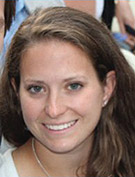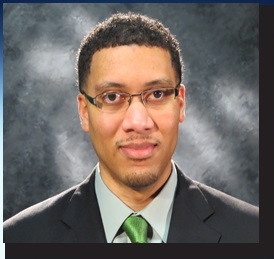Alumni Spotlights
Lindsay Tarolli

I manage the electronic health record (EHR) software for a large physician medical group in Northern New Jersey.
Recently, I have been digesting The Medicare Access and CHIP Reauthorization Act of 2015 (MACRA) and Merit-based Incentive Payment System (MIPS) program that went into action at the start of 2017. Specifically, I assessed how it will impact our company and our best way to participate in the program.
I’m thankful I took the Changing American Health Systems and Public Health Policy courses when I realized I had the skills to absorb and understand over 2,000 pages of regulatory requirements. Understanding how ACOs, PCMHs and other entities operate within the healthcare industry prior to tackling this project gave me the edge I needed to succeed within my position.
A new wave of change is going on throughout the healthcare industry as we try to manage all of the data that our EHRs gather. Right now, most health care systems, hospitals and large groups are isolated when it comes to their patients’ data and typically rely on claims data and internal analysis only for any kind of patient population analysis.
We are starting to see a lot of interoperability projects begin. Health Information Exchanges (HIEs) are gaining traction, particularly through the implementation of the MIPS program, to exchange patient data among various healthcare entities in the hopes of always maintaining an up-to-date patient chart. The hope is not only to prevent repeated tests and radiology studies to reduce the cost of care, but also to improve the quality of care and outcomes for each patient.
I find myself relying on the Health Services Outcome/Research course as we try to harness massive amounts of data. We anticipate a transition away from fee-for-service to pay-for-performance payment models as the insurance industry traditionally follows payment models formed by CMS.
Each healthcare entity will have to understand, monitor and improve upon clinical quality measures to be successful. The analysis of patient data at the population level will allow us to improve patient outcomes and hold ourselves at an even higher standard, ensuring that, collectively, we are providing the highest quality care possible.
I may not have chosen the most traditional career after earning my MPH, but as technology further integrates itself within the healthcare industry, I find myself using the skills and knowledge from the Masters in Public Health program every single day.
Ian Grant

Two years after graduating from the Upstate Public Health program, Ian Grant said he never would have imagined that he’d be managing an annual budget of $1.5 million in state grants for population health.
But that’s what he’s doing as population health program manager for the Fort Drum Regional Health Planning Organization in northern New York.
“My role is identifying health needs and leveraging resources to address those needs through partnership,” Ian said during a recent visit to Upstate to speak at Grand Rounds. “We’re really bringing a lot of new partners to the table to address public health in an interesting and innovative way. Our coalition includes insurers, schools, chambers of commerce, and numerous community-based organizations.”
The organization’s three-county service area includes the U.S. Army base at Fort Drum, family members of the soldiers, and the surrounding communities – most of them rural.
Compared to urban populations, residents of rural areas tend to be older, poorer, sicker and more likely to be uninsured, Ian said. According to state health statistics, North Country residents have higher rates of adult and child obesity, binge drinking, diabetes, smoking and suicide.
Ian works with nine hospitals, three public health agencies and several community based organizations to protect and improve the health of more than 250,000 residents.
A key piece of the Fort Drum Regional Health Planning Organization is a web-based health information system (www.ncnyHealthCompass.org). The interactive website engages and informs community members and monitors health improvements, using an evidence-based plan targeting concerns raised by the community.
“My job gives me the exciting opportunity to assess community health, develop targeted interventions and evaluate our efforts,” Ian said. “These are essential elements of public health. We’re focusing on new initiatives to address population health, new initiatives to bridge the gap between prevention and clinical care … making meaningful use of data, telemedicine, patient portals and neighborhood coalitions to improve rural health.”
Ian said his Upstate Public Health training informs his work every day.
“I get to use my Upstate Public Health training in research, data analysis, administration, health planning and program evaluation to help create a healthier community,” he said.
Ian also credits the mentoring he received from the faculty, who prepared him well for his administrative position in public health.
“I’m constantly pulling from the experiences they shared,” he said.
Lisa Kotyk

Lisa Kotyk, who graduated from the MPH program in 2011, works in biosecurity for a Virginia-based private company that contracts with the Department of Defense. Last fall, Lisa sent this note from Europe to the Upstate Public Health program.
“Hello from Germany! I attended a biosecurity conference this week and was lucky enough to be present for Mikhail Gorbachev’s speech at Checkpoint Charlie today...One of my earliest memories is of the Wall coming down, and to be in Berlin while they commemorate the 25th anniversary is just amazing. Without the MPH, I’d never have had this opportunity. Thank you!”
Lisa later visited the Upstate campus to meet with current Upstate Public Health students and alumni and be interviewed on video about the program.
Since 2012, Lisa has supported the Department of Defense’s efforts to reduce global health security risks. This involves promoting best practices in biological safety and security, improving partner countries’ capacities to safely handle outbreaks and focusing on select agents and toxins.
As a senior national security analyst with Computer Sciences Corporation, Lisa administers two biosecurity web portals.
One portal provides a platform on which G8 Global Partnership nations and organizations can share information about international biosecurity programs, current engagements, research projects and upcoming events. It also provides a means of secure communication.
In 2014, Lisa traveled with the U.S. delegation to Russia and Germany, and participated in the Global Partnership biosecurity meeting in Berlin. Lisa also traveled to United Nations headquarters in Switzerland, where she gave presentations to groups including representatives from the World Health Organization. Her team later was invited to INTERPOL headquarters in France to deliver a similar presentation.
Lisa said her work has been incredibly rewarding, and the opportunities she’s been afforded are invaluable.
“It has been on the coattails of work travel that I’ve been able to experience amazing places like Berlin, Cape Town, Islamabad and Phnom Penh,” Lisa said. “It was the MPH that opened the door to defense contracting, and every time I experience a little bit more of the world I’m so thankful for the Upstate Public Health program!”
